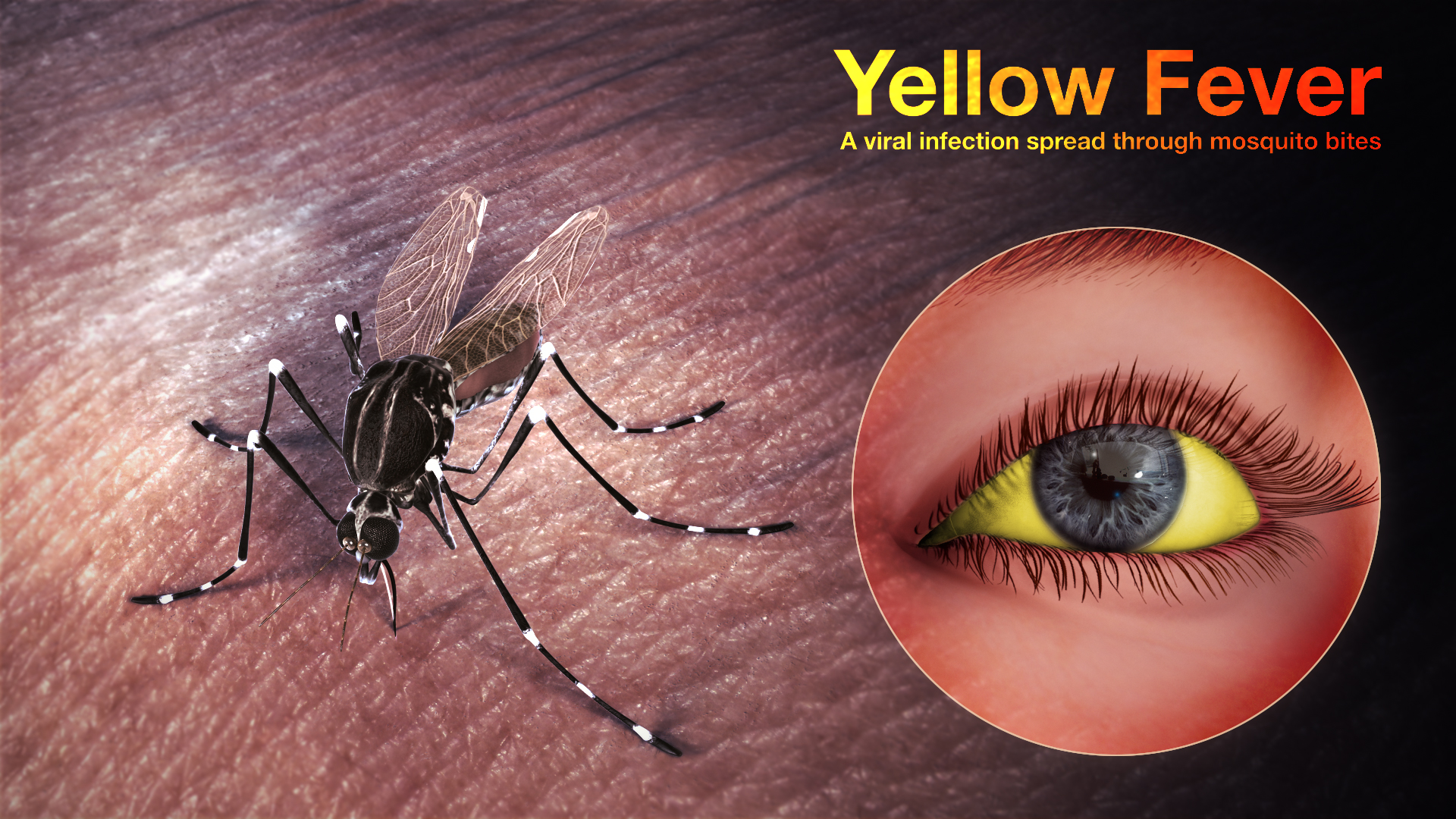Yellow fever is a serious, viral flu-like disease spread by a particular type of mosquito. It is fatal and known to cause fever, headache, nausea, and vomiting in the patients. It can also cause cardiac, liver, and kidney problems in its more advanced stages, along with bleeding or hemorrhaging. It is important to note that there is no specific treatment for yellow fever, although a vaccine shot can help in protecting people from getting the disease. This viral infection is more prominent in areas of Africa and South America.

Symptoms
Yellow fever is observed to develop quickly, sometimes with the incubation period being a mere three to six days after exposure. The initial symptoms of the disease usually resemble those of an influenza virus, which generally include:
- Headaches
- Joint aches
- Fever with chills
- Muscle aches
After the incubation of the virus, the infection reaches the acute phase which shows the following signs and symptoms:
- Fever
- Headache
- Light sensitivity
- Nausea, with or without vomiting
- Loss of appetite
- Dizziness
- Red eyes, tongue or face
- Muscle aches affecting back and knees
These symptoms are known to improve within days but some infected patients may enter the beginning of the toxic phase. As the patients enter the toxic phase, the symptoms become life-threatening and more severe than before. These symptoms include:
- Decreased urination
- Yellowing of the skin and eyes, also known as jaundice
- Abdominal pain and vomiting with or without traces of blood
- Bleeding from eyes, mouth, and nose
- Liver and kidney failure
- Brain dysfunction, including delirium, coma, and seizures
- Bradycardia or slow heart rate
People traveling to the locations of Africa and South America are advised by the doctors to get a vaccine shot against the yellow fever virus, several weeks before traveling.
Causes
This viral infection is caused by Flavivirus and is transmitted by a species of mosquito Aedes aegypti, which generally thrive in and near human inhabitations. These mosquitoes breed in the areas of tropical rainforest, humid and semi-humid environments, and even in clean water.
The viral infection is also known to infect monkeys apart from humans. These mosquitoes transmit the virus between monkeys and humans and vice-versa. The mosquito when bites the person or monkey infected with yellow fever, the virus enters into its bloodstream and gets circulated before settling in the salivary glands. As soon as the infected mosquito bites another person or monkey, the virus gets circulated, causing illness. As per the medical research, yellow fever doesn’t spread from one person to another.
Yellow fever is known for producing small scale epidemics as they highly influence the areas where there is high contact between humans and mosquitoes. Hence, there is a prime requirement of proper vaccination in such areas.
Treatment
As per medical records, there is no conclusive treatment available for yellow fever yet. However, doctors and physicians across the globe try to manage the symptoms of the disease through the following methods:
- Recommending sufficient fluids, intravenous delivery
- Getting more oxygen
- Sustaining healthy blood pressure
- Prescribing blood transfusions
- Treatments of other infection that develop simultaneously
- Dialysis in the event of kidney failure
Disclaimer: The information in no way constitutes, or should be construed as medical advice. Nor is the above article an endorsement of any research findings discussed in the article an endorsement for any of the source publications.








